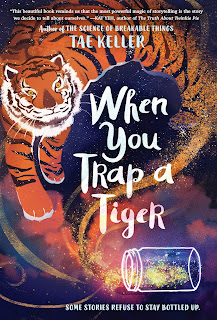Note (May 15, 2023): I don't regularly update this page anymore, but the info and recommendations are still relevant! Click the big link below to see my latest graphic novel reviews.
I have noticed that a lot of readers seem almost afraid of graphic novels—and
I was too when I first started reading them! But reading graphic novels is
actually a skill—the more you read, the better you get at reading and enjoying
them! Here, I'd like to outline things to keep an eye out for if you're
looking to get started with graphic novels—and I'd also like to recommend a
few graphic novels that are great for beginners! Then I'll walk you through my
special graphic novel rating system, Ratings for the Graphic Novel-Averse.
And here's a pro tip—if there's a graphic novel you're anxious to read, ignore
all of my advice below and go read it! I'm not trying to keep you from reading
what you'll enjoy with some kind of reading-level-esque nonsense—rather, I'm
trying to help those more reluctant to try graphic novels get acquainted with
the format in the way that may work best for them. And also,
the list below isn't necessarily a list of graphic novels for young
readers (in fact, young readers may instinctively have a better sense of
graphic novels than other readers)—rather,
the list is aimed at readers who are hesitant about starting with graphic
novels in the first place.
First, here's a quick link to view all my graphic novel reviews!
>>
Now, here's what to keep an eye out for
-
The composition of panels. Different illustrators have different
styles, and some illustrators cram their panels with all kinds of objects
and characters and effects. This kind of illustration can be hard to make
sense of. Generally, the simpler the panel composition, the easier the panel
is to make sense of.
-
The color scheme. Somewhat related to the clarity of
illustrations is the graphic novel's color scheme. Graphic novels
illustrated in full color tend to be easier to make sense of, because the
different people and objects in a panel contrast with each other quite
nicely. Some graphic novelists can use so much color that the panels become
overstimulating (see point 6), but there are quite a few graphic novels with
just enough color to make panels easy to parse. Graphic novels with
monochrome color schemes can be slightly tougher to parse at a glance,
although it depends on the art style and the use of color.
-
The amount of words. Graphic novels vary widely in how many
words they use to tell their story. Some graphic novels are so wordy that
you can practically read them like a prose book and ignore the
illustrations, and some have so few words that the illustrations are what
really convey emotions and plot events—others find a happy medium between
these two extremes. Graphic novels with a reasonable amount of words are
generally best for beginners, especially if those words are slightly
redundant and have corresponding cues in the illustrations that readers can
learn to recognize as well. But you probably don't want a graphic novel that
drenches you in too many words—those can get to be a little bit
overstimulating.
-
The presence of narration. Some graphic novels have narration,
but some choose to get by with just dialogue and illustrations. Narration
can help clear up the character's inner thoughts and feelings, but graphic
novelists can convey that stuff surprisingly well with just dialogue and
illustrations. I honestly don't think narration is that necessary even if
you are just starting out with graphic novels—but if it's absent, the
graphic novel needs to convey the characters' inner worlds clearly through
other methods.
-
The panel layout. This issue is rare, but some graphic novelists
arrange their panels in positively byzantine ways—panels are crammed into
weird crevices, strangely shaped, or even arranged to where you read each
row across the spine of the book over to the right-hand
page before moving to the next row on the left-hand page. Generally,
panels that are rectangular and arranged from page to page are clearest,
although a few full-page spreads don't hurt either.
-
The energy. If you have a child (or are a child), you might know
that there are some kids' TV shows that are nice and soothing, and there are
others that bombard you with lights and colors and sounds and shrill voices.
The same factor applies to graphic novels. Some graphic novels have
bombastic color schemes, panel layouts, and effects that can start to feel
overstimulating, especially for readers who are used to reading books in
prose that tend to feel calmer. I much prefer graphic novels that, while
sometimes adrenaline-filled, are closer in energy to prose and verse novels.
Great graphic novels for those new to the format
Please note: I recommend starting at the top of the list and moving down,
although feel free to exclude any books you're simply not interested in
reading!
Click on a book cover to head over to the review!

|
This book pretty much started
the MG graphic novel craze,
and
besides its unique skill
at depicting the middle school
experience,
it also has Raina
Telgemeier's crystal-clear art
style,
full-color illustrations, and
a nice amount of narration. If
you're
not concerned about
narration, you could substitute
this with
pretty much any of
Telgemeier's books!
|

|
This impactful true story of two
brothers' experiences in a
refugee
camp features clear if dense
compositions and plenty
of narration
to anchor the story. And it's in full
color too!
|

|
This fun mix of music, history, and
time travel has fabulously
clear full-
color art! And although there's no
narration,
Shaheen and Tannaz's
dialogue pretty clearly states
whatever
they're feeling.
|

|
This fascinating MG graphic biography
of Ruth Bader Ginsburg
features a
crisp, clean art style with lots of white
space and
red-and-blue outlines,
making it a great pick if you want to
start
trying some monochrome color
schemes. And it's quite wordy too,
as
you might expect for a biography!
|
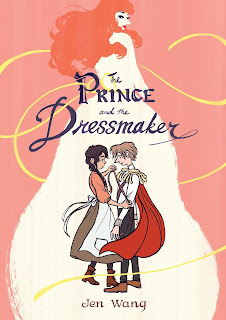
|
There's no narration in this delightful
story of royalty, Paris,
and destroying
gender norms, but Jen Wang's full-color
art is
crystal-clear, and her facial
expressions are pitch-perfect,
making
this book a great way to start interpreting
characters'
feelings from the art itself.
|
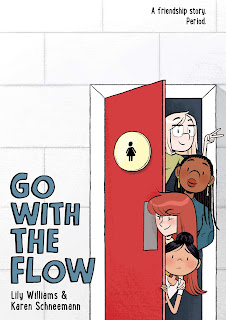
|
In a similar vein to the book above,
this graphic novel has
crystal-clear art
(albeit monochrome rather than full-
color)
and no narration, which makes it
another wonderful starting place
for
readers not as used to interpreting
plot lines from
illustrations alone. And
it helps that this story about period
stigma
and activism is not just informative,
but also
delightful, with a phenomenal
main cast and so many real-life
high
school issues that get explored!
|
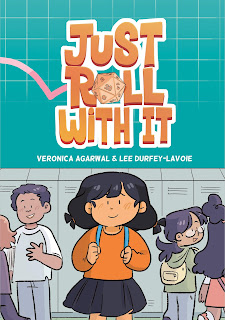
|
This delightful story of a girl starting
middle school who is
defined by her
kindness, interests, and relationships
rather
than her obsessive-compulsive
symptoms features
easy-to-interpret,
clear art arranged into easy-to-follow
panels!
There's no narration, but there's
enough text that it's not a major
issue.
This is a good one if you want to try
something
higher-energy that is
still easy to understand!
|
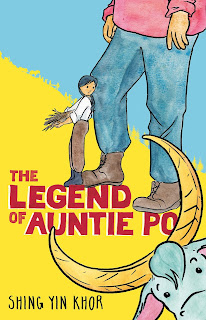
|
The easy-to-interpret, full-color, and
gorgeous watercolor artwork in this
story combine with precise
facial
expressions and a good amount of
dialogue and narration
to tell an
impactful story of life on an 1800s
logging camp,
complete with
explorations of racism, LGBTQ+
identity, and the
exchange of myths
and traditions between cultures!
Panel
layouts are a bit unconventional,
but it shouldn't be a big issue.
|

|
Although this book isn't a perfect read,
the fun blend of
middle-school drama,
sports, elephants, and diversity should
make
it appeal to young and old readers
alike! And Alina Chau's
beautiful
watercolor illustrations are easy to interpret
(thanks
to their full-color style and
shading). The panel layouts are
also
simple and easy to parse, although
there is no narration
and less dialogue
than in some of the books above.
|

|
This book explores culture and the
immigrant experience in a
surprisingly
nuanced way (and did I mention there's
food?), but just as Cici's story is
accessible to younger readers,
the
full-color, clear art and concise yet
reasonable writing
style makes this
story accessible to relatively new
graphic
novel readers too.
|

|
This delightful graphic novel, with
its rare and valuable
exploration of
allergies and its meaningful ideas
about
sibling and parent relationships,
benefits from clear art in full
color,
easy-to-interpret facial expressions
and panels, and
enough words and
narration to keep things clear! Font
size is
a little small, but for young
readers, that shouldn't be a
problem.
|

|
This wonderful blend of realistic fiction,
fantasy, and romance
doesn't just have
a delightful plot, meaningful messages,
and
LGBTQ+ representation. It also has
Molly Knox Ostertag's
expressive, clear
art style, with no facial expressions out
of
place, and no panels where you can't
quite see what's
going on. And unlike
Ostertag's books at the end of this list,
the
slightly lower amount of action and
the small-but-helpful amount
of
first-person narration ensures that this
book is a great
graphic novel for those
relatively new to the format.
|

|
This memoir of Ha's experience
immigrating from South Korea
to
Alabama here in the U.S. is
both quite compelling and
surprisingly
wordy—you could
practically read it without the
illustrations!
I found the style a bit
overstimulating at first, but I got
used
to it quickly—and readers
who just can't get the hang of
graphic
novels will appreciate
that this one is just shy of a regular
novel
with frequent illustrations!
|
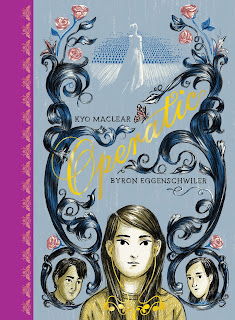
|
This gorgeous, artistic exploration
of the middle-school experience
and
of opera singer Maria Callas's life
and music has a
monochrome color
scheme that isn't the easiest to interpret
at
a glance—but that's the point,
because this book begs to be read
slowly
and savored, and each illustration
is a world of its own to be
explored.
This book is a lot like reading a picture
book—which
is no surprise, considering
that Maclear has published 17
picture
books, last time I checked.
|

|
Again, the monochrome color scheme
here is slightly tricky (though
the flat
illustration style is both spectacularly
gorgeous and
easier to interpret at a
glance than Operatic's style).
But
besides the interwoven exploration of
fairy tales, family,
and the immigrant
and LGBTQ+ experiences that has made
this
book my favorite graphic novel
ever, this book has clear
compositions
and layouts that help readers stay in
touch with
the characters and plot
despite the relatively low amount of
words
and lack of narration.
|

|
This exploration of the
incarceration of Japanese Americans
during
WWII—which starts off with
a bit of time travel—is relatively
complex
when compared to the above
books, but it's still a breeze
compared
to some other graphic novels I've
seen (in terms of
difficulty if not
subject matter). The limited color scheme
strikes
the perfect balance between
adding contrast (so panels are easy
to
interpret) and keeping the book
from feeling too
energetic/frantic.
And Kiku Hughes's illustrations are
Raina
Telgemeier-esque in their style
and immense clarity.
|

|
I've found that fantasy graphic
novels tend to be hardest of all
to
interpret, but The Witch Boy and
its sequels
avoid the chaotic
layouts and unintelligible panels
during
action scenes. Instead, Molly
Knox Ostertag imbues this series
(which
is unique and extremely
impactful in its exploration of how
gender
norms harm boys too) with
a crisp, full-color art style that is
so
easy to interpret you'll hardly
notice it's there, leaving the
magic
and powerful themes to take
center stage.
|
Or browse by Rating for the Graphic Novel-Averse
Browse the ratings by clicking on a rating label! Note that these ratings have
NOTHING to do with the book's
quality—that's what my regular rating scale is for. I love some
books that garnered a 1 on this scale!
Note that I am updating older ratings, so you may see books listed when you
click on a rating label that have a different rating listed within the post
itself. In those cases, the rating label you clicked on below is the correct
one, not the one listed within the post. Sorry for the confusion while this
feature is under construction!

|
Graphic novels with this rating are great for
beginners. They
usually have clear compositions
and panel layouts, color schemes
that allow for
nice contrast, and a reasonably high amount
of
words that often includes narration. Energy
is pretty low at this
level.
|

|
Graphic novels with this rating may have
monochrome color schemes
that have a bit less
contrast, but they tend to still be good
about
composition and panel layouts. The number of
words
typically starts to drop here, often due to
a lack of narration.
Energy is still relatively low.
|

|
Graphic novels with this rating may be more
energetic, with busier
panel layouts and composition,
as well as more intense color
schemes. The number
of words and presence of narration varies, as
it also
does with a rating of 3. Here, you may start to
encounter
the occasional facial expression or panel
composition that is just
plain unintelligible—
readers shouldn't have to get used to those
(they are
a flaw, not a stylistic choice), but they do still
show
up from time to time.
|

|
Graphic novels with this rating have energy levels
that vary, but
panel layouts and composition may
be a little unintuitive, and the
number of words and
presence of narration tends to be pretty low
here—
illustrations are used to convey a lot of meaning
in
these books. There also might be unintelligible
details as there
are with a rating of 2, or you might
encounter varied casts of
characters that are hard
to keep track of due to the art style.
|























